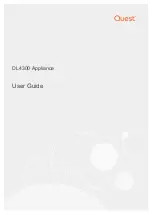
PlatinumRAID Owner’s Manual
Native Command Queuing (NCQ)
a technology designed to increase performance of SATA
hard disks by allowing the disk firmware to internally optimise the order in which read and
write commands are executed. This can result in increased performance for workloads where
multiple simultaneous read/write requests are outstanding, which occurs most often in server-
type applications.
Online Capacity Expansion
The ability to add space to an existing RAID array within a
session while preserving the RAID type and data within the array is known as online capacity
expansion. The availability of this feature enables the user to add space to a RAID array as and
when required without rebooting, thereby obviating the need for precise forecasts of capacity
requirements for the future.
Parity
A mathematical function that serves as a method for error verification and correction.
In strict technical terms the parity of a group is set to 1 if the number of bits in the group that
are set to 1 is odd, and 0 otherwise. For instance, the parity of N bytes of data is obtained by
determining the number of ith bits in the N bytes that are set to 1. If that number is odd, then
the ith bit of the result is set to 1. This may sound complicated, but in reality the result can
be obtained by simply evaluating the XOR of the N bytes. Parity allows one error in a group
(of bytes) to be corrected.
Parity Group
Complex RAID types such as RAID 10 or RAID 50 are built using two levels
of hierarchy. For instance, consider a RAID 50. A RAID 50 array is comprised of a group of
RAID 5 arrays at the first tier. Each RAID 5 array in the first tier is used just like a hard disk
in creating a RAID 0 at the next tier. The result is a RAID 50. In this example, each RAID 5
array at the first tier is denoted as a parity group. Each parity group is self-contained in the
sense that it is capable of withstanding a disk failure within its group and reconstructing the
data in the failed disk from parity information contained within that group.
Partition
The space contributed to each array on a physical drive is referred to as a
partition.
PCI
An acronym for “
P
eripheral
C
omponent
I
nterconnect”. It is Intel’s local bus standard
that supports up to four plug-in PCI cards per bus. Since PCs can have two or more PCI
buses, the number of PCI cards they can support are a multiple of four. The current PCI
bus implementation (version 2.2) incorporates two 64-bit slots at 66 MHz. Consequently, the
highest throughput achievable using such a bus is 528 MB/sec.
PCI-X
An enhanced version of PCI version 2.2. It supports one PCI slot per bus when running
at 133 MHz, two slots when running at 100 MHz and four slots when running at 66 MHz.
It is intended to provide throughputs in excess of 1 GB/sec using a 64-bit wide 133 MHz
implementation.
Performance
Performance is an important criterion on which a customer judges a RAID
controller. There are a number of popular benchmarking utilities that are available to
measure the I/O performance of a controller. Some of these utilities simulate specific real-life
applications and provide the user a score indicating the controller’s overall performance in
that niche. Others allow the user to specify tests with specific I/O characteristics and generate
D-Glossary








































